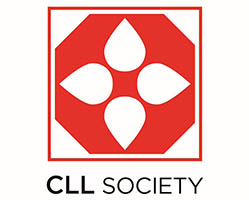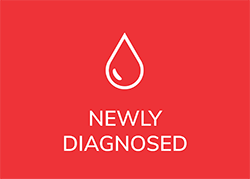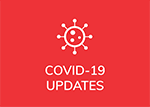Background:
Ibrutinib and Venetoclax have as we like to say at the CLL Society orthogonal or complementary mechanisms of action. Ibrutinib inhibits chronic lymphocytic leukemia or CLL cells’ proliferation and gets the cancer cells out of their protective niches in the nodes and bone marrow and into the blood stream where they are easier to kill. Venetoclax on the other hand, is a speedy and efficient killer of CLL cells, especially those circulating in the blood stream. They should make a great team. Preclinical research suggests that the combination of I+V may allow for a potent oral, fixed-duration (FD) treatment. Dr. Arnon Kater presented the late breaking abstract with the results of the GLOW study, the first randomized study of first-line fixed duration I+V in CLL / SLL patients at the European Hematology Association (EHA) 2021, which took place virtually.
Methods:
- GLOW enrolled patients (pts) aged ≥65 years or 18-64 years with cumulative illness rating scale (CIRS) score >6 or creatinine clearance <70 mL/min. What that means is that the younger patients had to have significant comorbidities to enroll.
- Pts with del(17p) or known TP53 mutations were excluded. It would have been unethical to have randomized those patients to Clb+O as that wouldn’t work for them.
- Primary endpoint was progression-free survival (PFS).
- Secondary endpoints included undetectable minimal (measurable) residual disease (uMRD) in bone marrow (BM) and complete response (CR) rate.
Results:
- 106 pts were randomized to I+V and 105 to Clb+O.
- Median age was 71.0 years (34.1% ≥75 years). 57.8% were male.
- At a median follow-up of 27.7 months (mo), PFS for I+V was superior to Clb+O (hazard ratio [HR] of 0.216). That hazard ratio means that the risk of progressing was reduced by 78.4% for those on I+V.
- Median PFS was not reached for I+V and was 21.0 months for Clb+O.
- PFS improvement with I+V versus Clb+O was consistent across all subgroups, including CIRS >6 (those with multiple comorbidities) and those age ≥65.
- Rate of uMRD was significantly higher for I+V vs Clb+O in BM (51.9% vs 17.1 and peripheral blood (PB; 54.7% vs 39.0%) as would be expected.
- With I+V, 84.5% (49/58) of pts maintained PB uMRD from end of treatment plus 3 months (EOT+3) to the assessment done one year post EOT.
- CR rate was significantly higher for I+V vs Clb+O (38.7% vs 11.4%).
- Time to subsequent therapy was longer for I+V. Median treatment duration was 13.8 months for I+V and 5.1 mo for Clb+O.
- After ibrutinib lead-in, 84.6% of pts with high tumor lysis syndrome (TLS) risk by tumor burden shifted to medium/low risk. This is because ibrutinib decreased the tumor bulk and so when the venetoclax was added there was less cancer to lyse or kill.
- Most common grade ≥3 or serious adverse events (AE) were neutrophil count decreased (34.9%), diarrhea (10.4%), and hypertension (7.5%) for I+V,
- For Clb+O, the most common serious AEs were the neutrophil count decreased (49.5%), low platelet count (20.0%), and pneumonia and TLS (5.7% each).
- 7 pts died while on I+V and 2 pts on Clb+O.
Conclusions:
An oral, once-daily, fixed duration combination of I+V demonstrated superior PFS versus Clb+O as first-line treatment for CLL, independent of the patients’ co-morbidities. I+V significantly improved depth and duration of remission, and thus, extended time to next treatment. uMRD with I+V was maintained for most patients for one year or more after EOT. This period of remaining uMRD post treatment is a powerful enticement for many patients.
But let’s take a step back. Frankly, none of this is surprising. Clb+O is easy to beat, even when those with del(17p) or TP53 mutations are excluded because we know that it would not be effective for those patients. It has already been proven a few years ago that ibrutinib by itself is superior to stronger chemotherapy protocols than Clb+O, including BR (bendamustine plus rituximab) and FCR (fludarabine, cyclophosphamide and rituximab). The fact that the combination betters Clb+O is to be expected. Clb+O should be retired as a comparator in such trials. We recognize that it still used in many countries, in places where there are better options such as I or V, it should have little or no role in both treating patients and doing research.
There is no doubt that I+V is a potent combination, but the increased deaths during treatment need to be better understood and further studied to see if it is a real trend. Would sequential treatment as in the IMPROVE trial [link when available], presented at the same EHA meeting, make more sense?
What our patient research to be presented at iwCLL 2021International Workshop in CLL says is that what patients really want is to have more options after their current treatment and to live as long as possible (OS). CRs and uMRD are important but, it’s ultimately all about staying alive.
Here is the link to the EHA 2021 abstract for the GLOW study.
Please enjoy my video:
Stay strong. We are all in this together.
Brian
Brian Koffman MDCM (retired) MS Ed
Co-Founder, Executive VP and Chief Medical Officer
CLL Society, Inc.

















